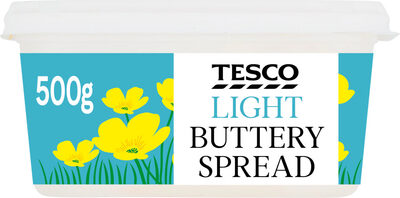Butter Me Up Light Spread - Tesco - 500g
This product page is not complete. You can help to complete it by editing it and adding more data from the photos we have, or by taking more photos using the app for Android or iPhone/iPad. Thank you!
×
Barcode: 5051140741594 (EAN / EAN-13)
Common name: Low fat spread
Quantity: 500g
Packaging: Plastic box, Pp-tub
Brands: Tesco
Categories: Spreads
Origin of ingredients: Ireland
Manufacturing or processing places: Ireland
Link to the product page on the official site of the producer: http://www.tesco.com/groceries/product/d...
Stores: Tesco
Countries where sold: United Kingdom
Matching with your preferences
Environment
Packaging
Transportation
Threatened species
Report a problem
Data sources
Product added on by tinorace
Last edit of product page on by packbot.
Product page also edited by aaronasachimp, kiliweb, swipe-studio, yuka.sY2b0xO6T85zoF3NwEKvlhNfc-LhkDLWK0TRwEus_-WkNpPjeYFc4ojkGao.











